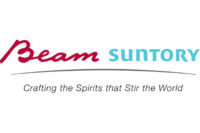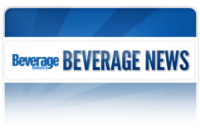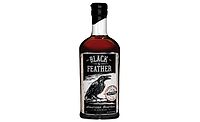In a hypothetical “Star Wars” scenario, Darth Vader could use the dark side of the Force to telekinetically shatter a glass bottle of vodka from across the room, for instance. When it comes to spirits within the U.S. beverage market, however, consumers are going over to the dark side in a much less violent manner: They’re simply purchasing more whiskey.
The whiskey segment increased 11.6 percent in volume for the 52 weeks ending Jan. 26 in U.S. supermarkets, drug stores, mass merchandisers, gas and convenience stores, military commissaries, and select club and dollar retail chains, compared with the prior-year period, according to Information Resources Inc. (IRI), a Chicago-based market research firm. Leading this volume growth was the Irish whiskey segment, which grew approximately 20 percent in volume last year, according to analysts. Edward Hsyeh, U.S. analyst for Chicago-based Euromonitor International, attributes much of that growth to Jameson Irish Whiskey, which increased nearly 20 percent in volume in the 52 weeks ending Jan. 26 in IRI-tracked channels, compared with the prior-year period. Jameson is a brand of Irish Distillers, which is a subsidiary of Paris-based Pernod Ricard.
Bourbon also was a significant driver of growth, growing 6.8 percent in volume in 2013, adds David Ozgo, chief economist for the Distilled Spirits Council of the United States (DISCUS), Washington, D.C.
By comparison, all dark spirits increased approxi-mately 3 percent in volume in 2013 compared with 2012, notes Jennifer Zegler, global food and drink analyst for Mintel, Chicago. Furthermore, the overall spirits category — including spirits-based ready-to-drink (RTD) cocktails — grew 2 percent in terms of volume last year, according to Euromonitor’s Hsyeh.
In terms of dollar sales, the whiskey segment edged out vodka, reaching nearly $1.65 billion in the 52 weeks ending Jan. 26 in IRI-tracked channels. However, vodka trailed closely behind with approximately $1.64 billion in dollar sales during the timeframe, IRI reports. This marks the second consecutive year that whiskey
has overtaken vodka as the No. 1 spirits segment according to dollar sales, marking a significant shift for the spirits category, analysts say.
Vodka has retained its top spot as the best-selling spirit by volume, however, selling 14.5 million 9-liter cases in the 52 weeks ending Jan. 26 in IRI-tracked channels. By comparison, whiskey sold 10.1 million cases during the timeframe, according to IRI data.
The impact of flavors
Despite the intracategory competition, one trend is being shared between the two segments: flavors. Both flavored vodkas and whiskeys remain a popular trend within the spirits category, analysts say.
“With craft beer sales on the rise in the U.S., I think flavor innovation is particularly important for the spirits category to provide a new experience for consumers and win them over,” says Natalie Tremellen, market analyst for Innova Market Insights, the Netherlands.
According to Mintel’s custom consumer research, 35 percent of vodka drinkers choose flavored vodka, and approximately one-quarter of whiskey drinkers look for flavored whiskeys.
Simple flavors, such as citrus, cherry, coffee, peach and chocolate, are most popular for vodka, DISCUS’ Ozgo notes. The darker flavors, including chocolate and caramel, emerged in popularity last year, Innova’s Tremellen adds. Confectionery flavored vodkas also continue to perform well, according to Euromonitor’s Hsyeh. However, in terms of growth, these confectionery flavors have peaked, he says.
Within the whiskey segment, flavors like cinnamon, apple and cherry have shown to be popular, Hsyeh adds. For instance, Fireball Cinnamon Whisky, a brand of Metairie, La.-based Sazerac Co. Inc., grew 271 percent in volume in the 52 weeks ending Jan. 26 in IRI-tracked channels, compared with the prior-year period.
Cordials and liqueurs have piggybacked on the success of flavored whiskeys, Mintel’s Zegler says.
“In dark spirits, cordials and liqueurs have outpaced the growth of whiskeys, brandy and Cognac,” she says. “However, much of the success in the cordial and liqueur segment has to do with products that are positioned as or aligned with flavored whiskeys, including Fireball, [Brown-Forman Corp.’s] Jack Daniel’s Tennessee Honey and [Campari America’s] Wild Turkey American Honey.”
Although flavored vodkas and whiskeys have aided the growth of cordials and liqueurs, they are contributing to the decline of RTD cocktails, analysts suggest.
“By definition, many flavored spirits are combining two different flavors to create a separate flavor profile for the consumer, similar to what one would do with a ready-to-serve cocktail,” DISCUS’ Ozgo explains. This creates more competition for the RTD cocktails segment, he says.
Spirits-based RTD cocktails declined 2 percent in volume and 6 percent in dollar sales last year, Euromonitor’s Hsyeh notes. This includes the RTD cocktails within Deerfield, Ill.-based Beam Inc.’s Skinnygirl line, which decreased 30 percent in volume and nearly 33 percent in dollar sales in the 52 weeks ending Jan. 26 in IRI-tracked channels, compared with the prior-year period.
Although the RTD cocktail category offers a convenient, premade option for consumers, Hsyeh says that this trend is losing steam in the marketplace.
“… [T]hat fad has reached its peak, and … if we see any growth, it’ll be fairly flat growth,” he says.
Crafting growth
The English gin segment also produced negative numbers last year, Hsyeh notes. It declined 2 percent in both volume and dollar sales during the timeframe, he specifies. However, he expects to see growth within the segment this year.
“We suspect that gin will actually start picking up steam as more people get acquainted with more craft styles of gin,” he says. “A lot of English players are starting to enter the market [because they are seeing] an upswing within gin drinkers and consumers.”
For instance, Surrey, England-based Brockmans Gin expanded its distribution from Europe into the United States in February.
In order for a spirit to be considered gin, it needs to at least include juniper berry flavor, Hsyeh notes. Beyond that, the segment offers a lot of flexibility to include other flavor profiles, which could entice craft spirits drinkers, he suggests.
Like craft beer, craft spirits offer variety and localness to consumers. According to Mintel research, 62 percent of dark spirits drinkers and 57 percent of white spirits drinkers say they would like to try more artisan or craft spirits, Zegler says.
Craft spirits also offer consumers an opportunity to set themselves apart from the crowd, Euromonitor’s Hsyeh notes. “Craft spirits are really picking up a lot of steam, and it’s because people are looking for avenues in their life that they can distinguish themselves or find something that’s unique,” he says.
The spice of life
In addition to craft spirits, the desire for variety crosses all alcohol segments, according to Mintel’s Zegler. As a result, beverage-makers are developing hybrid spirits that either blend two spirits or at least feature the flavor of a spirit, she notes. For example, Beam Inc. launched Courvoisier Gold in 2012. The spirit blends Moscato wine with Courvoisier Cognac. Last summer, Norwalk, Conn.-based Diageo and musical artist Sean “Diddy” Combs launched Ciroc Amaretto, which is a vodka with the flavor profile of amaretto.
In order to accommodate consumers’ interest in a broad variety of spirits, beverage-makers also could consider adding miniature packaging formats that would encourage trial, Zegler suggests. Nearly three-quarters of spirits drinkers are interested in trying new spirits if they have appealing flavors, but 62 percent of white spirits drinkers note that novelty flavored spirits are not everyday drinks, according to Mintel consumer research. Therefore, sweet, spicy or odd-flavored vodkas packaged in trial-sized bottles would allow consumers to experience different flavors without having to purchase a large bottle, Zegler says.
This packaging format also could help premium and lesser-known spirits, she adds. “It’s not yet a trend, but I think product trial is an important opportunity, not only for interesting flavors but also higher-tier products and unfamiliar options,” Zegler says.
Future performance
Despite the trend toward small bottles, the spirits category has big growth ahead, according to analysts. Euromonitor forecasts the spirits and RTD cocktails category to have a compounded annual growth rate of 2 percent for volume and 3 percent for dollar sales until 2018, Hsyeh notes.
Breaking the category into white spirits and dark spirits, Mintel’s Zegler predicts that white spirits will increase 18 percent in sales, and dark spirits will increase 17 percent in sales from 2013 to 2018. The projected performance of white spirits reflects consumers’ ongoing interest in vodka but also takes into account the potential of rum, tequila and gin, she says.
Rum and tequila, in particular, have the ability to play up their darker or aged varieties, Mintel’s Zegler notes.
Product innovation and an increasing consumer interest in premium spirits will impact the sales of dark spirits in the future, Zegler adds. However, Euromonitor’s Hsyeh says that the growth of whiskey and bourbon could hit a snag, because the amount of time it takes to age and produce the spirits might be too slow to keep up with growing consumer demand.
Tequila undertakings
Tequila has grown quickly from 2010 to 2013, says Jennifer Zegler, global food and drink analyst for Chicago-based Mintel. This year alone there have already been at least three notable acquisitions or partnerships. Most recently, Norwalk, Conn.-based Diageo North America acquired the super-premium tequila brand Peligroso from California-based Peligroso Spirits Co. LLC. Three weeks prior to that announcement, it formed a joint venture with rap artist and entrepreneur Sean “Diddy” Combs to acquire luxury tequila brand DeLeón. Additionally, Deerfield, Ill.-based Beam Inc.’s Sauza Tequila brand partnered with actor and pop music artist Justin Timberlake to launch Sauza 901 super-premium tequila. The new product builds off of Timberlake’s previously launched 901 Silver Tequila and incorporates the same spirit under the Sauza brand name.
The growth of the tequila segment also is impacted by Hispanic consumers, who favor tequila when it comes to their spirits consumption habits, according to Chicago-based Technomic Inc.’s “Special Trends in Adult Beverage (TAB) Report: Hispanic Consumer Insights.”
"Hispanics are an extremely important demographic group for the adult beverage industry, and many of their preferences and purchase habits are different from the general population," said Donna Hood Crecca, senior director at Technomic, in a statement. "Currently, the [legal drinking age] (LDA) Hispanic population skews young and male and strongly favors beer, tequila and red wine. Similar to the general population, they value variety and competitive pricing when purchasing adult beverages, but they buy them in a broader range of retail outlets. They enjoy adult beverages frequently but consume more drinks and spend more per occasion than the general population, whether at a restaurant or bar or at home."
By next year, Hispanics will account for 15 percent of the total U.S. LDA population; by 2045, one-quarter of the U.S. LDA population will be Hispanic, Technomic reports.
To better appeal to all consumers, the tequila segment could provide them with additional education regarding the various types of tequila available, Mintel’s Zegler suggests.









